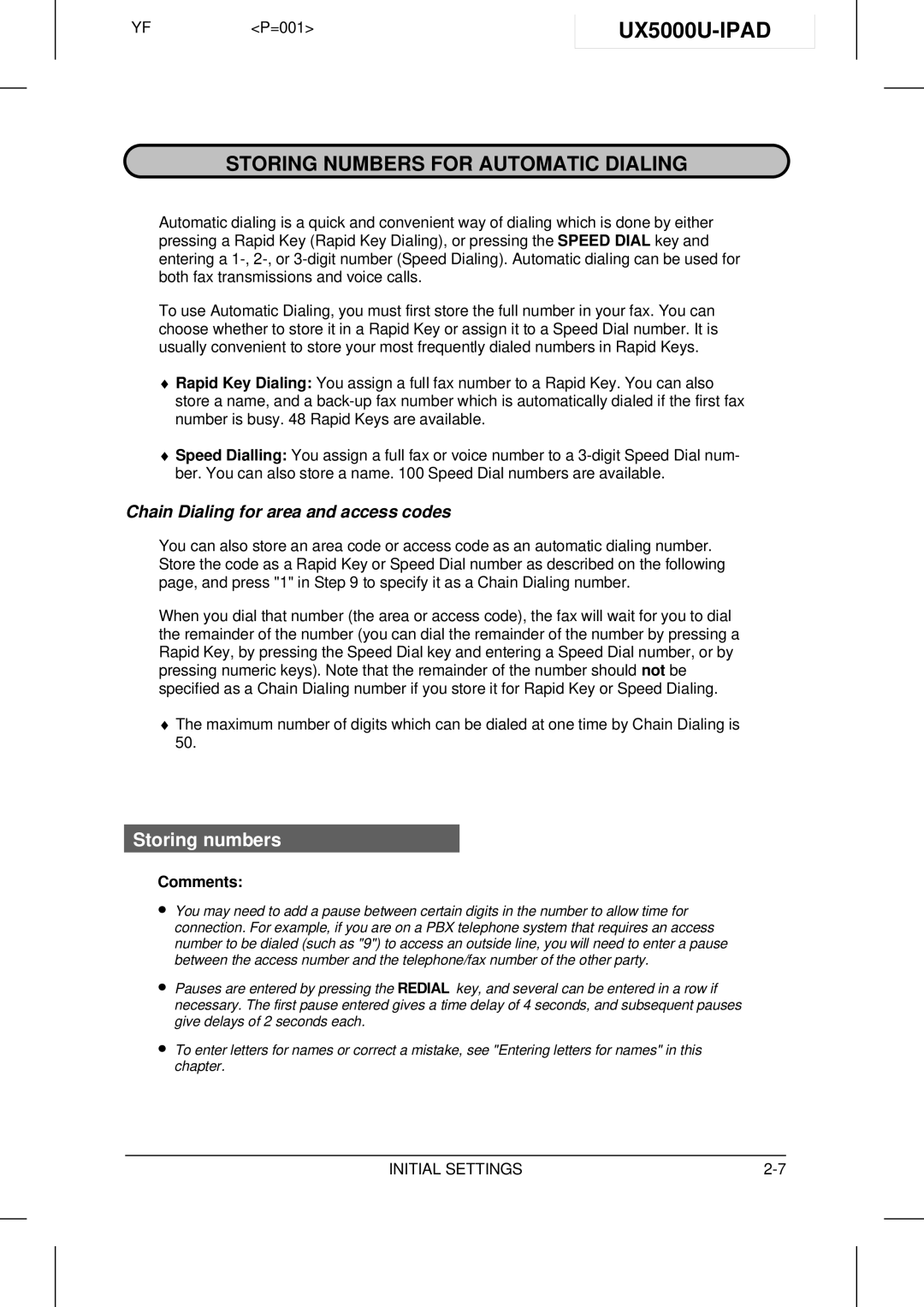
YF | <P=001> |
|
STORING NUMBERS FOR AUTOMATIC DIALING
Automatic dialing is a quick and convenient way of dialing which is done by either pressing a Rapid Key (Rapid Key Dialing), or pressing the SPEED DIAL key and entering a
To use Automatic Dialing, you must first store the full number in your fax. You can choose whether to store it in a Rapid Key or assign it to a Speed Dial number. It is usually convenient to store your most frequently dialed numbers in Rapid Keys.
♦Rapid Key Dialing: You assign a full fax number to a Rapid Key. You can also store a name, and a
♦Speed Dialling: You assign a full fax or voice number to a
Chain Dialing for area and access codes
You can also store an area code or access code as an automatic dialing number. Store the code as a Rapid Key or Speed Dial number as described on the following page, and press "1" in Step 9 to specify it as a Chain Dialing number.
When you dial that number (the area or access code), the fax will wait for you to dial the remainder of the number (you can dial the remainder of the number by pressing a Rapid Key, by pressing the Speed Dial key and entering a Speed Dial number, or by pressing numeric keys). Note that the remainder of the number should not be specified as a Chain Dialing number if you store it for Rapid Key or Speed Dialing.
♦The maximum number of digits which can be dialed at one time by Chain Dialing is 50.
Storing numbers
Comments:
∙You may need to add a pause between certain digits in the number to allow time for connection. For example, if you are on a PBX telephone system that requires an access number to be dialed (such as "9") to access an outside line, you will need to enter a pause between the access number and the telephone/fax number of the other party.
∙Pauses are entered by pressing the REDIAL key, and several can be entered in a row if necessary. The first pause entered gives a time delay of 4 seconds, and subsequent pauses give delays of 2 seconds each.
∙To enter letters for names or correct a mistake, see "Entering letters for names" in this chapter.
INITIAL SETTINGS |
